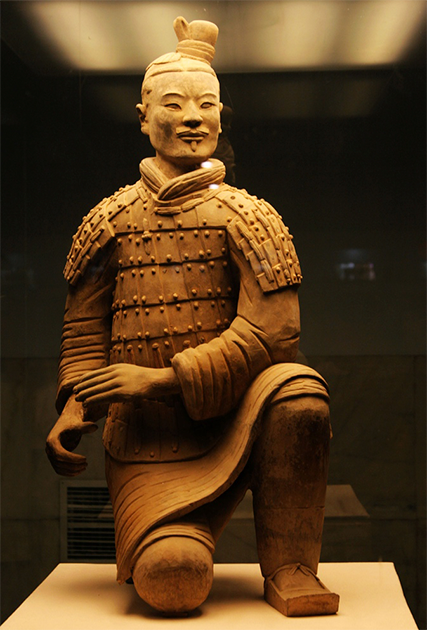The adage “the pen is mightier than the sword” is probably familiar to you, but are you aware that body armour made of paper is more resilient than armour that is forged from metal?
It contradicts everything we know about warfare, in which powerful fighters are typically protected by steel or iron plate armour. But according to accounts from Ancient China, wearing paper armour was occasionally seen to be preferable.
2,000 years ago, during the Eastern Han era, papermaking first appeared in China. Although the older, more primitive paper has been discovered, the Chinese eunuch Cai Lun is credited with creating paper.
The invention of paper, which offered a more useful writing surface than bamboo, wood, or silk, changed the course of history. In addition to its obvious applications, the Chinese even made paper armour with it.
With a variety of materials, including turtle shells, bronze, stone, leather, and eventually steel, expertly crafted into small, square, rectangular, and fish scale-shaped pieces to provide the best protection during battle, the Chinese have historically shown an impressive ability to protect soldiers. The fact that silk and paper armour are mentioned in ancient Chinese documents might surprise you.
A military manual from the Ming Dynasty shows a helmet made of cotton, paper, and rattan on the right and sleeved paper armour on the left.
The Tang Dynasty is when paper armour is first mentioned, according to Peter Dekker in Hand Papermaking Magazine (618 to 907 AD).
According to Chinese legend, Shang Suiding created paper armour to enhance civilian defence during conflict. It is even said that the governor of He-Dong provided 1,000 soldiers with suits of pleated paper armour.
According to Berthold Laufer, warriors in An-hui Province, known for their paper manufacturing, are recognized for their paper armour built out of triangular scales. Tang-era paper armour was made of folded paper sheets.
The 1621 Wubei Zhi, also known as the “Treatise on Military Readiness,” contains the most in-depth account of paper armour. Naval captain Mao Yuanyi explains that for soldiers in the south, “the best choice for foot soldiers is paper armour, mixed with a variety of silk and cloth.”
Korean paper was praised for its durability in Qing Dynasty descriptions, and American Consul Edward Bedlow noted: “It seems ridiculous to call such combinations armour, and yet they make an armour superior in many instances to steel.”
Paper armour proved to be more efficient against swords and arrows than steel during a MythBusters experiment on the Discovery Channel.
According to Scott Rodell, the paper was most likely folded and sewn into wads in cotton pouches to form individual paper scales before being stitched into a cotton backing.
Paper armour was effective against arrows and musket balls but useless against rifle fire. Similar ideas are used to create modern bulletproof armour, which is lightweight and rust-resistant.

